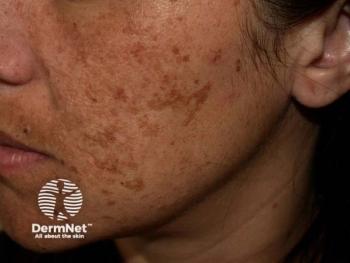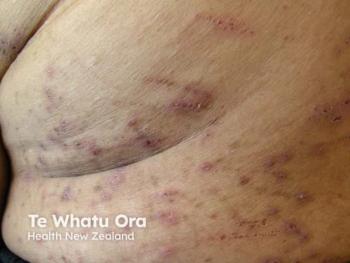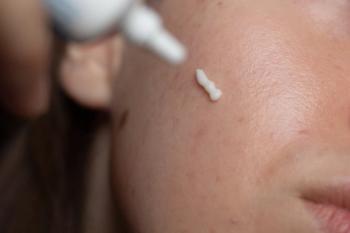
Q&A: Rolf-Markus Szeimies, MD, on the Evolution of 5-ALA
Discover how Rolf-Markus Szeimies, MD, is revolutionizing at-home skin care with 5-ALA, enhancing cellular health and hydration in daily routines.
Rolf-Markus Szeimies, MD, external advisor for German-based Kiyomi Skin and Vice President of the European Society for Photodynamic Therapy in Dermatology, brings decades of clinical insight into the evolving role of 5-aminolevulinic acid (5-ALA) in skin care. Traditionally confined to photodynamic therapy for actinic keratoses and other medical indications, 5-ALA is now emerging as a novel active ingredient in topical formulations, offering mitochondrial and epidermal benefits without phototoxicity. In this exclusive interview with Dermatology Times, Szeimies discussed the scientific advancements behind
Dermatology Times: What is 5-ALA and how does it improve the skin? What clinical data from Kiyomi Skin supports these benefits?
Szeimies: 5-ALA (5-Aminolevulinic Acid) is a naturally occurring amino acid derivative that serves as a precursor in the heme biosynthesis pathway. When applied topically, it penetrates the skin and is metabolized into protoporphyrin IX (PpIX), which has well-documented effects in photodynamic therapy (PDT). However, at lower non-photodynamic concentrations combined with iron, 5-ALA has emerging evidence of enhancing cellular turnover, improving barrier function, and supporting mitochondrial activity in aging and stressed skin. In cosmetic formulations, 5-ALA is used at much lower concentrations, as 5-ALA phosphate, and combined with iron. Iron plays a crucial regulatory role by promoting the natural metabolism in the production of heme. This prevents the accumulation of PpIX. As a result, neither phototoxic nor photosensitizing effects occur, making the formulation safe for daily, topical use.
At Kiyomi Skin, we’ve advanced the science of skin care by formulating 5-ALA phosphate with iron in a stabilized, cosmetically elegant delivery system designed for daily use. Unlike pharmaceutical-grade 5-ALA hydrochloride, our cosmetic formulation utilizes 5-ALA phosphate combined with ferrous citrate to optimize skin performance. In a recent double-blind study conducted with 45 participants, subjects using 5-ALA-based skin lotions and creams showed significantly improved skin hydration and visibly reduced wrinkles after just 4 weeks. Since application of 5-ALA phosphate with ferrous citrate reveals upregulation of markers linked to epidermal renewal and mitochondrial biogenesis, this translational evidence bridges our clinical dermatology roots with next-generation skin care.
Dermatology Times: With Kiyomi Skin being the first brand to bring 5-ALA to market, what do you believe has prevented 5-ALA from being widely adopted in topical formulations until now? Why has it been so overlooked?
Szeimies: 5-ALA has traditionally been confined to the clinical domain, particularly in PDT for actinic keratoses and certain oncologic indications. Its instability in formulation, photosensitivity, and the complexity of its metabolic pathway made it a non-starter for over-the-counter or cosmetic applications for many years. What changed is twofold: First, replacing unstable 5-ALA hydrochloride with inherently stable 5-ALA phosphate, combined with a pH-controlled delivery system as well as an iron compound, has enabled effective and reliable formulation for daily cosmetic use. Second, our deeper understanding of 5-ALA’s non-photodynamic effects—such as its role in mitochondrial optimization and cellular repair—opened new therapeutic possibilities. Kiyomi Skin is the first to take this leap from clinic to consumer, guided by dermatologic science.
Dermatology Times: How do you envision 5-ALA fitting into a dermatologist's existing recommendations for patients, either as a standalone treatment or in conjunction with other therapies?
Szeimies: We see 5-ALA as a versatile active that can be integrated into both preventive and corrective skin care regimens. For younger patients, it can serve as a foundational anti-oxidative and barrier-strengthening serum. In more mature skin or in patients with photodamage, it complements treatments like retinoids, chemical peels, or energy-based devices by supporting cellular energy metabolism and tissue repair. Because of its mitochondrial mechanism of action, 5-ALA doesn’t compete with standard actives like niacinamide or hyaluronic acid—it synergizes. For dermatologists, this represents a unique option to enhance patient outcomes without introducing irritation or disruption to the skin barrier.
Dermatology Times: Are there any particular skin concerns or patient demographics that you believe would benefit most from incorporating 5-ALA into their skin care routine?
Szeimies: Patients with early signs of aging, dullness, or impaired skin recovery—particularly those with a history of sun exposure—are ideal candidates. We also see promising results in patients supporting a healthy skin barrier, due to 5-ALA’s role in enhancing cellular repair and mitochondrial support. Interestingly, bioenergetic decline in the skin begins in the late 20s. That makes 5-ALA a strategic ingredient for both prevention and restoration. Moreover, because of its excellent tolerability in our formulation, it's suitable across skin types and fits especially well into routines for sensitive or inflamed skin.
Dermatology Times: Looking ahead, what future research or applications do you foresee for 5-ALA in dermatology, beyond its current use in Kiyomi Skin products?
Szeimies: We believe we’re only scratching the surface. Future areas of interest include post-procedure recovery, where topical 5-ALA may accelerate re-epithelialization after lasers or microneedling. There's also potential in melasma and pigmentary disorders, given its impact on oxidative stress and cellular turnover. On the research side, we are currently partnering with academic dermatology centers to explore 5-ALA’s role in skin aging at the transcriptomic level, particularly how it modulates mitochondrial DNA integrity and fibroblast senescence.
Dermatology Times: Is there anything else you'd like to share with our audience of dermatological clinicians?
Szeimies: Dermatologists have long known 5-ALA as a tool for disease treatment. We invite them to now consider it as a bridge to everyday skin optimization—rooted in the same mechanisms, but with new intent. Kiyomi Skin’s mission is to take clinically meaningful actives and render them usable, stable, and elegant enough for real-world, daily application. We believe this is where the future of dermatologic skin care lies: translational science that serves both the skin and the patient experience.
Newsletter
Like what you’re reading? Subscribe to Dermatology Times for weekly updates on therapies, innovations, and real-world practice tips.


















